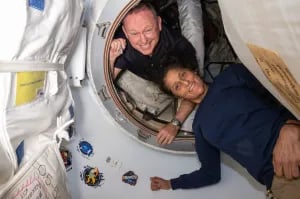NASA Announces Safe Return Plan for Sunita Williams and Butch Wilmore
Technical Issues with Boeing Starliner Lead NASA to Adjust Astronauts' Return Timeline


NASA has recently provided critical updates regarding the status of astronauts Sunita Williams and Barry "Butch" Wilmore, currently aboard the International Space Station (ISS). Initially, their mission was set to conclude with their return on Boeing's CST-100 Starliner spacecraft, part of NASA's Boeing Crew Flight Test. However, due to ongoing technical issues, including helium leaks and thruster failures, NASA has adjusted their return plans, highlighting a commitment to astronaut safety and mission integrity.
Challenges with the Starliner Spacecraft
The mission faced significant hurdles shortly after launch. The Starliner, designed to transport astronauts to and from the ISS, encountered technical difficulties that compromised its planned operation. Helium leaks in the propulsion system and issues with the thruster system were identified, raising concerns about the spacecraft's ability to ensure a safe return journey. NASA's decision to delay the astronauts' return stems from a thorough assessment of these issues and a cautious approach to avoid any risks during re-entry.
NASA's Response and Contingency Planning
In a recent press conference, NASA officials, including Administrator Bill Nelson, outlined their strategy to manage the situation. The agency emphasized that while the Starliner remains an essential component of NASA's Commercial Crew Program, safety is the top priority. Therefore, NASA has planned for the astronauts to remain on the ISS until February 2025, at which point they will return aboard SpaceX's Crew Dragon, part of the Crew-9 mission.
This alternative arrangement ensures that Williams and Wilmore, who have already spent an extended period in space beyond their initial mission timeline, can safely return to Earth. NASA's collaboration with SpaceX highlights the flexibility and resilience of the Commercial Crew Program, which includes multiple partnerships to safeguard mission objectives and astronaut safety.
The Impact on NASA's Future Missions
The challenges faced by the Starliner spacecraft underline the complexities involved in human spaceflight. As NASA continues to rely on commercial partners to transport astronauts, the lessons learned from the Starliner mission will be crucial for future endeavors. The agency is working closely with Boeing to address the identified issues, aiming to enhance the reliability and safety of the Starliner for future crewed missions.
NASA's decision to adapt and utilize SpaceX's Crew Dragon also reflects the dynamic nature of space exploration partnerships. By leveraging multiple spacecraft and technologies, NASA ensures that missions can proceed despite unforeseen challenges, maintaining the momentum of human exploration of space.
Looking Ahead: Continued Innovations and Partnerships
While the current situation presents challenges, it also offers an opportunity for growth and innovation. NASA's ability to manage these hurdles will not only impact the success of the Starliner program but will also set a precedent for handling technical setbacks in future space missions. The collaboration between NASA, Boeing, and SpaceX demonstrates the strength of partnerships in achieving the ambitious goals of space exploration.
Sunita Williams and Barry Wilmore's mission, though extended, continues to contribute valuable scientific research and technology testing aboard the ISS. As they await their return, NASA's ongoing efforts to address the Starliner's issues will pave the way for safer, more efficient space travel in the years to come.
For more information, you can watch the recent NASA press conference, which provides detail updates on the situation here(YouTube, YouTube).
